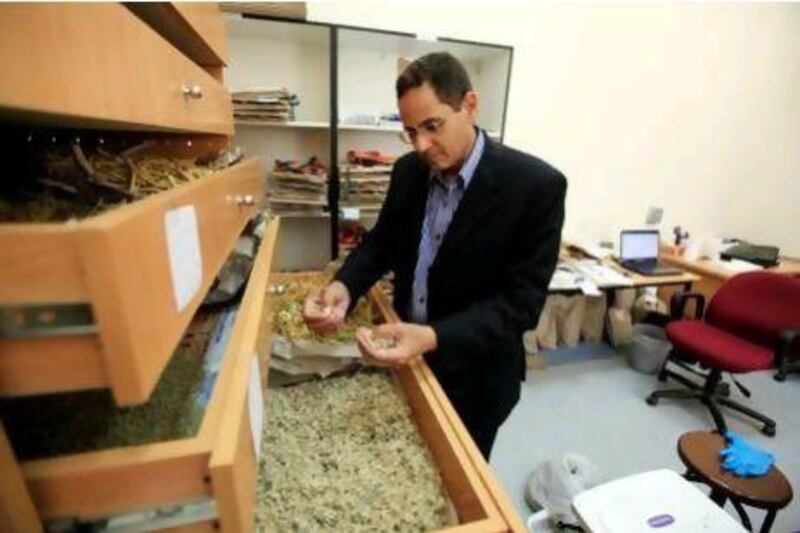SHARJAH // An academic at the University of Sharjah has won funding of almost Dh1 million for a three-year research project on the use of native plants and trees to landscape the region's towns and cities.
Dr Ali El Keblawy, a plant ecologist, won the grant from the Qatar Foundation, on a topic he says is of value to the entire GCC.
He will be working with another researcher, Dr Hamad Al Kuwari from the Qatar-based Gulf Organisation for Research and Development.
"There is much demand for green landscaping all over the region. The problem is they are introducing ornamental plants from other countries and the demand of those for water is very high," he said. "They are not adapted for the high temperatures, diseases, different insects and pesticides used in the GCC."
During a prior research project conducted for the Environment Agency-Abu Dhabi, Dr El Keblawy screened around 100 native desert plants, looking for those most appropriate for landscaping.
About 50 were attractive to look at, had good structure and were a variety of perennials, shrubs, trees, flowers and grasses, he said. All can tolerate high temperatures and live on little water, reducing the need for costly and environmentally damaging irrigation.
Dr Olisanwendu Ogwuda, the head of water resource management at Heriot-Watt University in Dubai, said recycling desalinated or sewerage water is a proven method in places such as Spain, but is not allowed in the UAE.
He warned that if groundwater resources became exhausted, their most economical replacement would be non-recycled desalinated water, which would nonetheless "place a huge and costly burden on the Emirates' water infrastructure."
Dr El Keblawy has narrowed his list of 50 plants down further, to those easier to germinate.
He said there are also many species to source in neighbouring countries such as Qatar and Oman.
The pesticides and chemicals used to feed and preserve non-native plants greatly damage the environment, Dr El Keblawy said.
"When we use native plants, they are resistant to the local diseases, weather and insects so are much lower in terms of maintenance."
Abu Dhabi Municipality says that, since 2010, native plants have made up about 35 per cent of the capital's ornamental landscaping.
In addition to saving water, they provide shelter and food for wildlife such as birds.
Dr El Keblawy said Abu Dhabi and Al Ain are the two cities using the most native species, including the ghaf tree, arak plant and sidr tree. In other cities, as few as 10 per cent are native species and, in some cases, none are.
Brett Cavanagh, the manager of plant introduction and trials at Al Ain Zoo, said water consumption by non-native trees can be up to five times that of local species.
"It is not unusual for some large trees to consume 300 or more litres of water per day. By contrast, the ziziphus spina-christi tree can survive on 80 litres per day and the prosopis cineraria [ghaf] 60 litres."
Agriculture and forestry account for around 76 per cent of Abu Dhabi's water use, which led the emirate's Urban Planning Council to issue planting rules last year for all future public areas. Under the Abu Dhabi Public Realm Design Manual, at least 80 per cent of the landscaping in public areas is required to be locally occurring, drought-tolerant plant species.
Mr Cavanagh said education is key: "The UAE is one of the highest consumers of water per capita in the world, so raising awareness of the water-saving benefits of native plants and plants from other desert regions is essential."
[ mswan@thenational.ae ]





